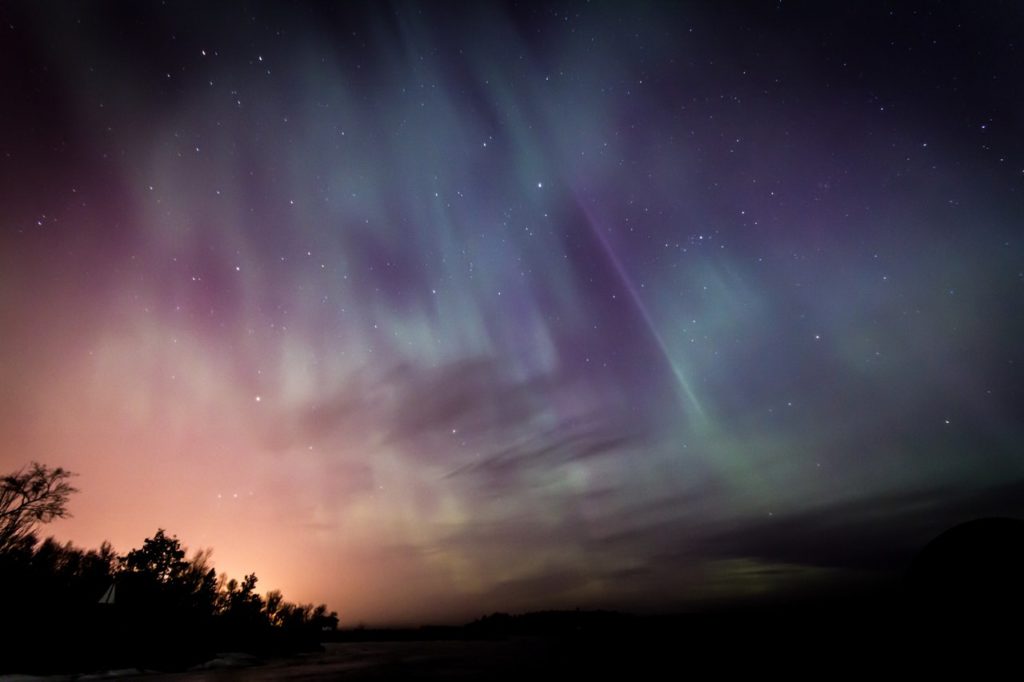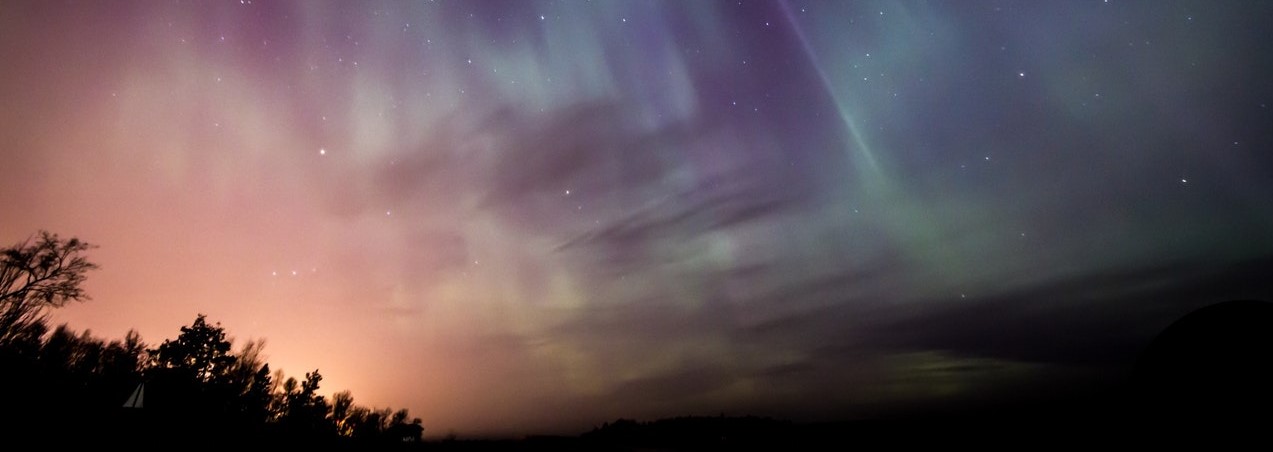We offer this post in both Spanish and English, with thanks to writers Carmen Horst and Marcela Huepe, and translator Bill Espinosa
“El Reino existe dentro de ustedes y alrededor de ustedes”
-Evangelio según Tomás (logion 3)
“Hay otros mundos pero están en este”
-Paul Eluard
Poetas y sabios afirman que estamos rodeados y permeados por mundos sutiles, energías conscientes a las que estamos ciegos y sordos porque no despertamos otros órganos de percepción que tenemos disponibles. Nuestra maravillosa mente lógica no basta, requerimos abrir el “ojo del corazón”, el nous, o mente sutil. Para esto, necesitamos completar nuestra Presencia, habitando nuestro cuerpo y purificando nuestro corazón. “Donde está tu corazón (nous), está el tesoro” dice Jesús, en el Evangelio según María Magdalena.
Escribe Cynthia Bourgeault en El Camino Sabio de Conocimiento [1]: “existe un continuo energético atravesando la Creación, iniciándose en la Conciencia pura y terminando en el mundo sólido de las piedras y las mesas. En contraste con los modelos que visualizan a Dios y la Creación como dos entidades separadas, los caminos de Sabiduría enfatizan que hay una circulación fluida a lo largo de este continuo energético, y que la Conciencia Divina atraviesa cada nivel, independiente de su forma externa” (pp. 45-46).
Con un corazón menos dormido, podemos percibir las energías más sutiles del amor, la atención, la oración o el anhelo profundo, dentro y a nuestro alrededor. La calidad de nuestros actos varía según la calidad de la vida que ponemos en movimiento, como si una luz distinta los iluminara desde dentro. Podemos saborear la diferencia de un acto genuinamente generoso de otro que hacemos por obligación o culpa. En esta exploración, existe un reino interior para ser descubierto.
“Este reino ha sido descrito por los místicos, teólogos y visionarios de todas las grandes tradiciones espirituales”, continúa Bourgeault. “Los pensadores griegos lo llamaron el ‘mundo inteligible’, el mundo de ideas puras que precede a las formas. Para los hebreos antiguos era hesed o la Misericordia de Dios, un acuerdo inquebrantable que sostiene juntas las energías humanas y divinas. En la tradición Sufi y la teosofía, es el ‘mundo imaginal’; los celtas hablan de lo ‘feérico’, en ambos casos refiriéndose a una inteligencia más sutil que ilumina las formas visibles” (pp. 47-48).
“El término más familiar en el mundo cristiano, por el cual Jesús nombró esta capa sutil de la realidad, es ‘El Reino de los Cielos’. Lamentablemente, la interpretación cristiana habitual de esta frase es que “El Reino” es el lugar de goce eterno donde iremos después de muertos en recompensa por un buen comportamiento. Esta es una distorsión trágica de lo que efectivamente estaba enseñando Jesús” (p.48).
Jesús le dijo a quienes lo seguían: “El ojo es la lámpara del cuerpo. En quien su visión esté entera, todo su ser se llenará de luz” (Mateo 6:22). Una visión más entera, menos fragmentada, se hace posible al recoger mente, corazón y cuerpo, ahora, aquí, y reunir nuestras partes en un instante de presencia viva.
Que podamos despertar el corazón para contemplar el tesoro.
________
[1] Bourgeault, Cynthia (2003). The Wisdom Way of Knowing: Reclaiming an Ancient Tradition to Awaken the Heart. Jossey-Bass.
English translation:
The Imaginal and the Kingdom
“The Kingdom is inside you, and it is outside you.”
The Gospel of Thomas, Logion 3
“There are other worlds but they are in this one…”
Paul Eluard
Poets and sages tell us that we are surrounded and suffused by subtle worlds and conscious energies to which we are deaf and blind because we have not awakened other organs of perception that are at our disposal. Our marvelous logical mind isn’t enough; we have to open the eye of the heart. For this we need to solidify our Presence, inhabiting our bodies and purifying our hearts. “Where your heart [nous] is, there is the treasure,” says Jesus in The Gospel of Mary Magdalene.
In The Wisdom Way of Knowing Cynthia Bourgeault wrote [1], “…there is an energetic continuum running through all creation, beginning……in pure consciousness and ending in the solid word of rocks and tables. In contrast with …….the models which view God and creation as rigidly separate, the Wisdom model stresses the fluidity of movement across the energetic continuum and the presence of divine consciousness at every level, regardless of the outward form.”
With a more awakened heart, we can perceive the more subtle energies of love, attention, prayer, and the deeper longing, within us and around us. The quality of our acts varies depending on the quality of the life we put in movement, as if a different light illuminated from within. We can taste the difference between an act of genuine generosity from one taken out of guilt or obligation. In this exploration, an internal kingdom awaits discovery.
“This realm has been endlessly described by mystics, theologians, and visionaries of all the great spiritual traditions,” Bourgeault continues. “The Greek fathers called it the ‘intelligible world’, the world of pure idea preceding form. To the ancient Hebrews, it was chesed, or the Mercy of God, a fierce covenantal field that held the human and divine energies together. In the Sufi and theosophical traditions, it’s the ‘imaginal world’; in the Celtic, it’s ‘faerie’, in both cases, an inward and more subtle intelligence illuminating the outward form.”
“The name by which it is most familiar to Christians is the name by which Jesus called it: the ‘Kingdom of Heaven’—although the usual Christian interpretation put on this phrase, as the place of endless bliss attained after death as a reward for good behavior, is a tragic distortion of what he was actually teaching.”
In Matthew [6:22] Jesus said to those who followed him, “The eye is the lamp of the body. If your vision is whole, your whole body will be full of light…” A fuller vision, less fragmented, becomes possible when we collect our mind, heart, and body, now, here, and reunite all the parts of our being in a moment of living presence.
May we awaken the heart to see the treasure.
________
[1] Bourgeault, Cynthia (2003). The Wisdom Way of Knowing: Reclaiming an Ancient Tradition to Awaken the Heart. Jossey-Bass.
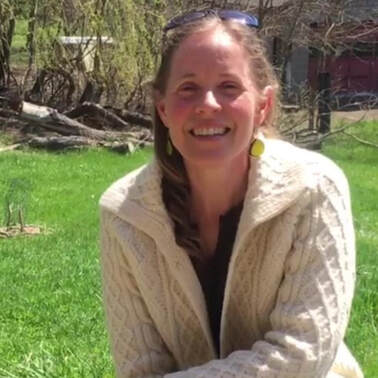 CARMEN HORST es pastora en la Iglesia Menonita Walnut Hill en Goshen, Indiana, EE.UU. Carmen es de origen argentino y está involucrada en el trabajo internacional y español de Wisdom Waypoints. Co-dirige un círculo de lectura en español enfocado en el libro de Cynthia Bourgeault, María Magdalena. Carmen se graduó del Seminario Bíblico Anabautista Menonita, donde estudió Formación Cristiana y Dirección Espiritual. Ha ofrecido acompañamiento espiritual desde 2010. Carmen está casada con Eric y tienen dos hijas.
CARMEN HORST es pastora en la Iglesia Menonita Walnut Hill en Goshen, Indiana, EE.UU. Carmen es de origen argentino y está involucrada en el trabajo internacional y español de Wisdom Waypoints. Co-dirige un círculo de lectura en español enfocado en el libro de Cynthia Bourgeault, María Magdalena. Carmen se graduó del Seminario Bíblico Anabautista Menonita, donde estudió Formación Cristiana y Dirección Espiritual. Ha ofrecido acompañamiento espiritual desde 2010. Carmen está casada con Eric y tienen dos hijas.
CARMEN HORST is a pastor at Walnut Hill Mennonite Church in Goshen, IN. She is a native of Argentina and is extensively involved in Wisdom Waypoints’ international and Spanish language work, most recently co-leading the Spanish reading circle of Cynthia Bourgeault’s The Meaning of Mary Magdalene. Carmen graduated from Anabaptist Mennonite Biblical Seminary, where she studied Christian Formation and Spiritual Direction. She has been offering Spiritual Direction since 2010. Carmen is married to Eric, and they have two daughters.
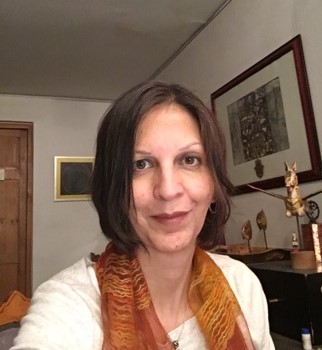 MARCELA HUEPE M. Llevo casi 40 años dedicada al ejercicio y estudio de las prácticas contemplativas, principalmente dentro del Trabajo de G. I. Gurdjieff. Mi convicción es que un camino de transformación es posible en la vida cotidiana, si estoy presente a lo que ella me ofrece como material, instante a instante… y si permanezco abierta la pregunta sobre lo que esto puede significar.
MARCELA HUEPE M. Llevo casi 40 años dedicada al ejercicio y estudio de las prácticas contemplativas, principalmente dentro del Trabajo de G. I. Gurdjieff. Mi convicción es que un camino de transformación es posible en la vida cotidiana, si estoy presente a lo que ella me ofrece como material, instante a instante… y si permanezco abierta la pregunta sobre lo que esto puede significar.
Mi amor por la expresión artística, la historia del Arte y el lenguaje de los símbolos me llevó a estudiar Artes Plásticas. A partir de mi deseo por contribuir a la política pública y la construcción de un país más justo, obtuve un Magíster y Doctorado en Economía luego de estudiar Pedagogía, lo que me ha permitido trabajar en investigación y desarrollo de políticas públicas en educación hasta el día de hoy. Recientemente, también me formé en Psicoterapia Contemplativa en el Nalanda Institute for Contemplative Science. Mi aproximación al trabajo de Cynthia Bourgeault surgió hace unos tres años leyendo sus libros como parte de una búsqueda del cristianismo perdido, invitación iniciada por Ravi Ravindra, unos de mis maestros en el Trabajo.
Soy chilena y vivo en Santiago de Chile en los faldeos de la cordillera de las Andes, junto a mi marido y mi hijo menor. Vivir en mi país es un desafío constante, un lugar propicio donde ejercitarme en el encuentro del tiempo y la Eternidad.
MARCELA HUEPE “I’ve spent nearly forty years dedicated to the practice and study of the contemplative way, principally within the G.I. Gurdjieff work. It’s my belief that a way of transformation is possible in daily life if I am present to what it offers moment by moment and if I keep open the question of what it might mean.
My love for artistic expression, the history of art and the language of symbols took me to study the plastic arts. Arising from my desire to contribute to the pubic policy and the construction of a more just nation, following a study of pedagogy, I obtained both a masters degree and a doctorate in Economics. These have allowed me to work in the investigation and development of public policies in education—a work path which I continue to this day. Recently I also completed a program om Contemplative Psychotherapy at the Nalanda Institute of Contemplative Science. My draw to the work of Cynthia Bourgeault arose from reading some of her books which I found in my search for a lost Christianity—a search initiated by Ravi Rvindra, a senior figure in the Gurdjieff Work.
I am Chilean and live in Santiago at the foothills of the Andes together with my husband and youngest son. Living in my country is a constant challenge, a propitious place to practice being at the juncture of time and Eternity”
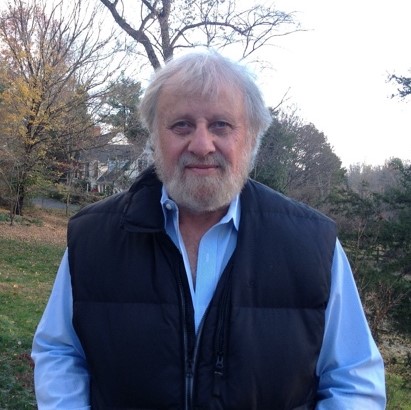 BILL ESPINOSA se sintió atraído por las enseñanzas de Cynthia Bourgeault cuando redescubrió sus raíces cristianas en las tradiciones contemplativas. Bill pasó gran parte de su niñez en Bogotá, Colombia y ha estado ayudando a la expansión de Wisdom Waypoints en el mundo de habla hispana. Su experiencia incluye la participación en el trabajo de Gurdjieff por varios años y la guía espiritual de Abdul Aziz Said, un sufí que fue una voz líder internacional en la paz y la resolución de conflictos. Bill ha sido bendecido con la ayuda de muchos otros. Es el autor del thriller ecológico WARMING! y es activo en la respuesta de su comunidad a la crisis climática.
BILL ESPINOSA se sintió atraído por las enseñanzas de Cynthia Bourgeault cuando redescubrió sus raíces cristianas en las tradiciones contemplativas. Bill pasó gran parte de su niñez en Bogotá, Colombia y ha estado ayudando a la expansión de Wisdom Waypoints en el mundo de habla hispana. Su experiencia incluye la participación en el trabajo de Gurdjieff por varios años y la guía espiritual de Abdul Aziz Said, un sufí que fue una voz líder internacional en la paz y la resolución de conflictos. Bill ha sido bendecido con la ayuda de muchos otros. Es el autor del thriller ecológico WARMING! y es activo en la respuesta de su comunidad a la crisis climática.
BILL ESPINOSA (translator) In rediscovering his Christian roots through its contemplative traditions, Bill Espinosa was drawn to Cynthia’s teachings. Bill spent much of his childhood in Bogotá, Colombia and has been helping Wisdom Waypoints expand into the Spanish-speaking world. His background includes a number of years’ participation in the Gurdjieff Work and the spiritual guidance of Abdul Aziz Said, a Sufi who was a leading voice in international peace and conflict resolution. He has been blessed with help from many others. He is the author of the eco-thriller, WARMING! and is active in his own community’s response to the climate crisis.


